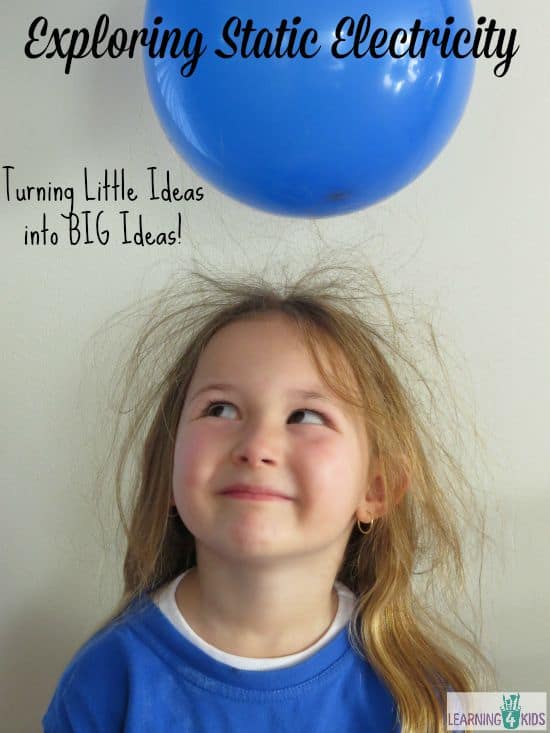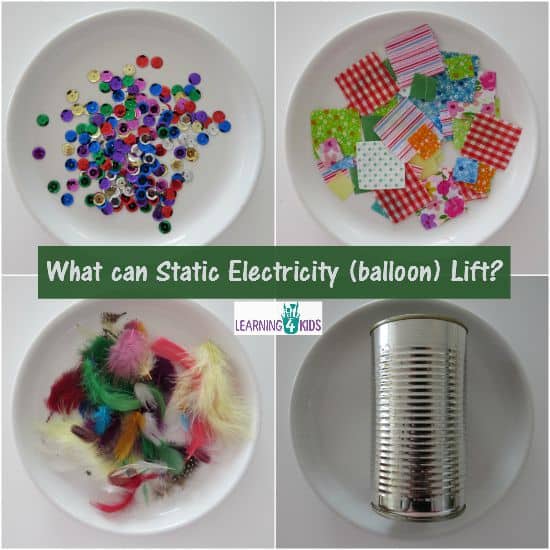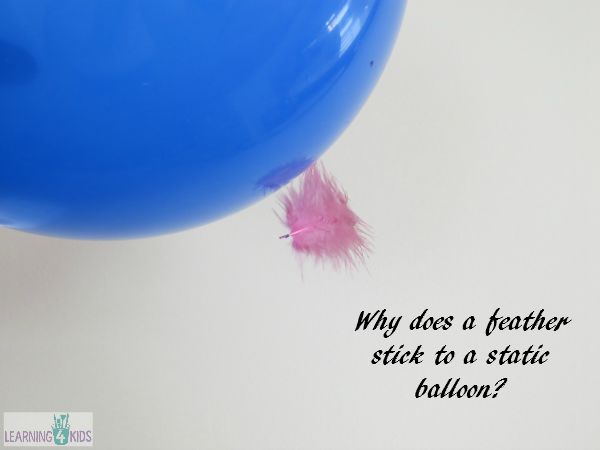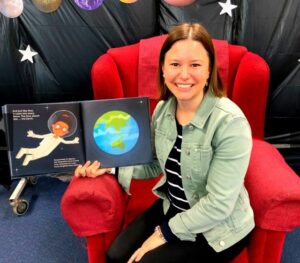
Taking a little idea and making it BIG! Children have limitless imaginations and come up with the most amazing ideas.
Recently while having a bit of fun with left over party balloons and static electricity, it raised some curiosity and interest with my kids to question, experiment and investigate static electricity further. It is these little ideas that grow into BIG ideas and children are very creative and uninhibited when it comes to great ideas.
Exploring Static Electricity

We all know how much fun it is to make our hair stand up with static electricity and a balloon but what else can you do with static electricity? What other objects can it lift?
- First we collected four items to test, fabric squares, sequins, an aluminium can and feathers.
- We talked about and predicted which items we thought would be ‘picked up’ by a static balloon. It was decided that the lighter objects such as the fabric and feathers would lift but the tin can and sequins would be too heavy.
- Next we experimented and rubbed an inflated balloon against our hair and a woollen fabric scarf. We placed it against one of the objects to see what would happen. We repeated the steps for all other objects.
A New Discovery
Experimenting with static electricity led us to finding that static is an energy, an energy that can create a motion such as to lift or pull things.
The very last object we tested was the aluminium can and placed it on its side on the table. After rubbing the balloon on our hair again we held the balloon close to the can and watched it as it rolled towards it. We slowly moved the balloon away from the can and it will followed. The best way to show what we found out is by creating a video. This video is short and sweet but will give you an idea of how it works.
What is happening?

When you rub a balloon against your hair (or fabric) it creates static electricity. This involves negatively charged particles (electrons) jumping to positively charged objects. When you rub the balloon against your hair it becomes negatively charged, it takes some of the electrons from the hair/fabric and left some positively charged.
In this experiment, opposites attract and the positively charged hair is attracted to the negatively charged balloon and starts to rise up to meet it. This is also shown in the image above with the feather, as the negatively charged balloon becomes near the feather it becomes positively charged and rises up.
This is also similar to the aluminium can which is drawn to the negatively charged balloon as the area near it becomes positively charged, once again opposites attract pulling the aluminium can towards it.
Imagine the fun games you could come up with using static electricity and rolling aluminium cans!!
